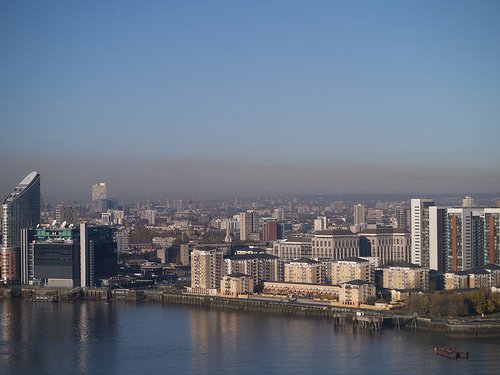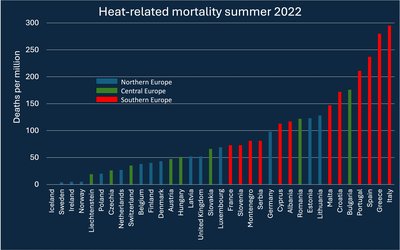
Climate change affects surface concentrations of air pollutants, such as fine particulate matter (PM2.5, particulate matter ≤2.5 μm in aerodynamic diameter) and ozone (O3), which are associated with increases in human morbidity and premature mortality. Exposure to PM2.5 is associated with an increased relative risk of lung cancer, cardiopulmonary and all-cause mortalities while O3 exposure is associated with increased incidence of cardiovascular, respiratory and all-cause mortality.
Research indicates that 21st century climate change (under the moderate SRES A1B climate change scenario) increases global all-cause premature mortalities associated with PM2.5 by approximately 100,000 deaths and respiratory disease mortality associated with O3 by 6,300 deaths annually. The relative change in premature mortality as the percent change between “present” and “future” simulations is about a 4 % increase in global all-cause mortality associated with PM2.5, and less than a 1 % increase in respiratory disease mortality associated with O3.
In the northern hemisphere, surface PM2.5 increases substantially near source regions (e.g., over East Asia, eastern United States, northern India, and Africa). These source regions are usually highly populated and hence, increases in PM2.5 will adversely impact human health. With climate change, surface PM2.5 concentrations decrease over western Brazil, parts of northern Europe, the Middle East and parts of North Africa, suggesting a potential “climate benefit” for air quality there.
Source: Fang et al., 2013. Climatic Change 121: 239–253.
Photo: Shirokazan (www.flickr.com)








